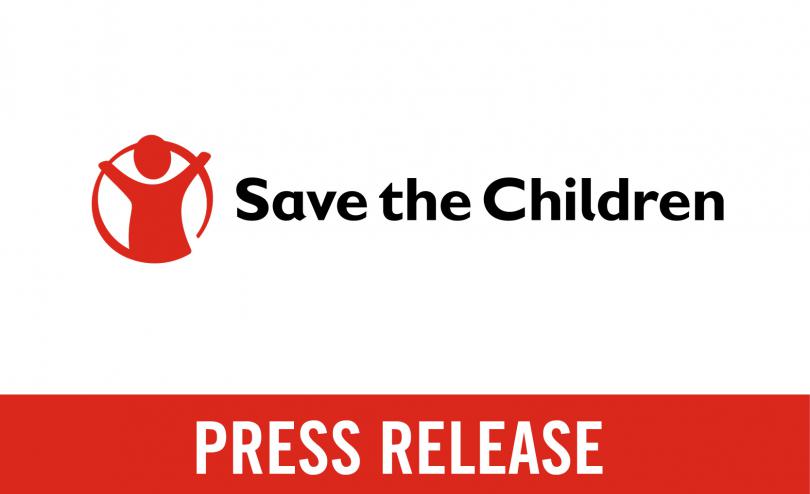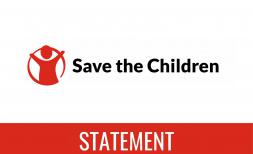Girls cite domestic violence in their homes as key factor for leaving home – new global study from Save the Children

Violence, hunger and the hope of a better future are all major factors for girls leaving home countries in search of a better life, a new global study across three continents has found.
The study summarised in the report Girls on the Move, which took place in three continents, listed key motivations and outcomes among girls aged 7 – 23 who migrate to South Africa, Serbia, Greece, Colombia, Mexico and Bosnia and Herzegovina.
Among the findings are:
- Domestic violence, and other forms of gender-based violence, were often the main push factor for many of the girls who left Zambia and Mozambique for South Africa. The majority of the girls said they wanted a better future, through education or work.
- For girls migrating from the Middle East to the Balkans, conflict was the main reason. However, risks of gender-based violence also fuelled migration. Forced marriages, domestic violence and not being able to give their daughters an education, were all factors contributing to families with daughters deciding to leave.
- Girls who left Venezuela for Colombia cited eating three meals a day as the positive outcome for their move. In their home country, 28 per cent of the pregnant girls and women suffer from acute malnutrition.
“I gave a condition to my family, that I would leave only if we are going somewhere where I can get a passport and be able to work. They respected my opinion”, Nadene, 18, Afghanistan, interviewed in Bosnia-Herzegovina.
Research from three different continents shows what the situation for girls on the move looks like in their home countries, during their journey and -in some cases- when they arrive at their final destination.
Their stories highlight serious rights violations and strong agency and determination to improve their outcomes, Save the Children said today.
“Regardless of the situation in their countries of origin or while on the move, girls that are adequately received in destination countries get married and have children later, and obtain a higher level of education”, says Helena Thybell, secretary general of Save the Children Sweden.
“The bravest girls in the world are among those on the move, who have the courage to leave their home and family in search for protection, education and food. But girls on the move are particularly vulnerable to rights violations and grave risks during their journeys. The prospect of a better life in their new country can be significantly advanced, if we protect them and ensure an adequate reception system”, Ms. Thybell continued. “There is a lack of research to help us understand their situation and what is needed to protect them. This research will give us deeper knowledge about how to reach and support girls on the move.”
Notes to editors:
- The four studies investigate the situation for girls on the move, who migrate to South Africa, Serbia, Greece, Colombia, Mexico and Bosnia and Herzegovina.
- Save the Children spoke to 104 girls between the ages of 7 and 23 years old. The research in the Balkans and Greece also included 26 parents and caregivers, or people who have been unaccompanied children themselves, but were older at the time of the interviews.
- Save the Children supports girls on the move in origin, along the route and in destination countries. With this research series, Save the Children wants to listen to, and learn from, girls on the move themselves. We aim to further strengthen our work with girls on the move by adapting our interventions to their realities and needs, according to the recommendations from the reports:
- Listen to, and learn from, girls on the move. Continued investment in understanding girls’ situation and integrating those learnings in programme and advocacy work is necessary.
- Make gender analysis a prerequisite in all programming and advocacy for children on the move to ensure that girls’, as well as other children’s, needs and rights are considered.
- Integrate gender-based violence prevention and response as a core aspect of programming that targets children on the move.
- Prepare and equip girls on the move to strengthen their capacity to make informed decisions and deal with risks and ensure they have accurate information and contacts.
- Strengthen peer-to-peer support and intergenerational solidarity among women and girls on the move, as they help girls to address their needs and advocate for their rights.
- Recognize the diversity of girls on the move. Interventions targeting girls on the move need to develop strategies to reach different groups of girls, and particularly those in the most vulnerable circumstances, such as girls who are mothers, girls with disabilities or girls from ethnic minorities.
- Integrate childcare as part of programming. Many girls on the move are, or become, mothers during their journeys. They need health care, but also access to the same activities as other children on the move. Childcare is essential to guarantee their access and participation.
- Provide girls-only safe spaces to strengthen girls’ empowerment, support networks and skills.
- Advocate for the protection of undocumented girls on the move and hold authorities accountable to realize their rights. Children’s rights need to be upheld under all circumstances, including when on the move.
More information, the report and spokespeople available through:
Vendela Rundberg, +46 733 55 34 33 / Vendela.rundberg@rb.se
Anne Thorngren, +46 723 57 67 56 / anne.thorngren@rb.se




